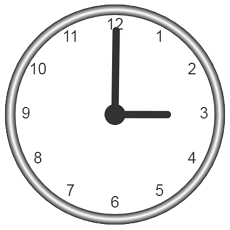Introduction
One of the central idea of special relativity is the idea of time dilation. The time from now on is a local phenomenon. The “flow” of the time is depending on the clock's speed compare to the stationary observer.
There are a lot of paper showing the absurdity of such claim. Some of the paper show mathematical errors, which I agree are there, while some other consider philosophical aspect of the problem. Practical physicists offer some test against relativity. The Special Relativity successfully withstand all such attempts to dig under its foundation. Here I am trying to realize completely different approach. I am going to step on the relativistic platform and show that time dilation and Twin Paradox both are nonsense even from relativistic point of view.
Twin Paradox
Twin paradox is well-known thought experiment in special relativity dealing with two identical twins, one of whom is traveling with high speed. Due to the time dilation one of the twins who remained on Earth has aged more. The paradox appears when one will step into traveler reference frame. From this perspective the twin remained on Earth aged less.
Lorentz Transformation
Lorentz transformation is the holy grail of Special Relativity. It shows the relation between time and spatial coordinates of the moving frame (primed) and stationary frame (unprimed):
$$\large t' = \gamma (t - {{vx} \over {c^2}}) \tag{1}$$ $$\large x' = \gamma (x - vt) \tag{2}$$ $$\large y' = y; z' = z \tag{3}$$Technically speaking, Lorentz transformation could only be applied to the dimensionless point. Physical body with some dimension (x could be not equals to zero) will have different time dilation for the different part of the body.
All textbooks on Relativity just ignore that and using x=0 in the derivation of time dilation. The right question for the Twin Paradox would be: “which part of the astronaut is aging less”? Although the time differences between astronaut's body parts are very small, relativity physics never mentioned such fact.
Actually I am going to ignore this time differences and will use non-dimensional astronaut, just like relativity physics does and keep going with x=0.
The Meaning of Time
No, no, no, I did not meant The Time, I am just talking about the difference between terms in classical and relativistic physics. The difference is huge but barely mentioned somewhere in the textbooks.
In classical physics there is no absolute time, time is always the interval. If we are calculating the velocity of the body moving with constant acceleration, then:
$$\large v = v_0 + at $$Time here is a time interval which could start at any particular moment. When experiment started time is set to zero. The formula is valid for any time interval.
The situation is completely different in relativistic physics. Take a look at Lorentz transformation formula. Both primed and unprimed time could not be just any intervals. Moreover there is no time in relativity, it is spacetime. The time is forth axis of such spacetime and it is absolute! Zero time in moving and stationary system could happened only once during synchronization of our clocks. Such synchronization could only be done in just one moment. That is when zero coordinate of the moving reference frame passing zero coordinate of stationary frame. “A broken watch is certain to be right twice a day”.
Einstein in his “ON THE ELECTRODYNAMICS OF MOVING BODIES” wrote:
- “Zeit” bedeutet hier “Zeit des ruhenden Systems” und zugleich “Zeigerstellung der bewegten Uhr, welche sich an dem Orte, von dem die Rede ist, befindet”.
- “Time” here denotes “time of the stationary system” and also “position of hands of the moving clock situated at the place under discussion.”
The Twins
We just learned that time is an absolute time in relativistic physics, the fourth coordinate, the position of clock’s hands.
Here is the rocket, travelling through space:




Fig.1 Rocket just started the journey, \(v \ll c, \gamma \approx 1\) and the hands of both clocks show almost the same time.




Fig.2 Rocket in the middle of the journey, velocity is high, \(\gamma > 1\) and the hands of the clocks are in different positions.




Fig.3 Rocket stopping at the end of the journey, \( v \ll c, \gamma \approx 1\) and the hands of both clocks show almost the same time.
Situation at the end of the journey completely satisfies time dilation formula:
$$\large t' = \gamma t $$Just remember again, time is absolute. When velocity is near zero, the time in moving system equals to time in stationary system!
Where is Twin Paradox? It’s just vanished in the thin air.
Also compare Fig.2 and Fig.3. When the rocket is decelerating, the time goes backward. One more absurdity.
Bad Math
The usual derivation of time dilation in the relativistic handbooks looks like following:
- Time difference was calculated between moving and nonmoving observer somewhere in the middle of the trip.
- Such difference integrated along the whole path.
Obvious fallacy in this approach is the following - time difference has the dimension of time, but what is the variable of integration? In velocity calculation the acceleration was integrated and the variable of integration is time (dt). The result will be velocity with the dimension of acceleration multiplied by time. Similarly the integration of velocity will produce position. For the time dilation they are integrated time difference with the dimension of seconds over what? Maybe d1? Integration over path (dx) will have the dimension of meter*seconds and integration over time will produce square seconds.
I repeat one more time – the time is absolute and second mistake lays right here. Time difference between New York and LA is 3 hours. What will be the time difference between towns during one week?
By saying “3 hours difference” we mentioned that absolute time difference at any given moment is equals to 3 hours. Time dilation in relativity physics is also absolute value. It is the difference between the positions of the hands of clocks. Shall we integrate the position of the hands?
Conclusion
As we just show, relativistic time dilation exists only in motion. When the speed of the moving reference frame reduced, the time dilation disappeared. This conclusion was made strictly from the relativity platform, no formulas were argued. Even from the relativity point of view both time dilation and Twin paradox just does not exist.
Nevertheless, there are numerous experiments with moving clocks where time dilation was found. The clock was stationary at the end of such experiments. It should be no relativistic time dilation during experiments with moving clock, unless we are measuring this dilation somehow in motion.
Such time dilation happened not “in accordance to the theory”, but rather against the theory. Moving clock experiments should be reviewed under some alternative theory.